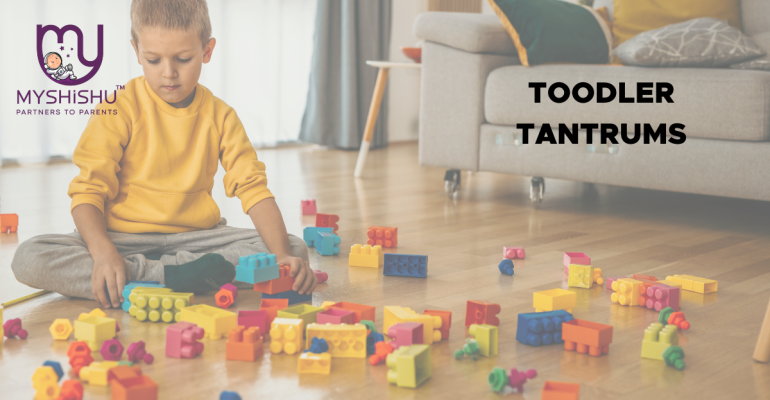Toddler Tantrums – Tears to Triumph Positive Strategies
Toddler Tantrums – Tears to Triumph Positive Strategies
Introduction
Welcome to the tumultuous yet rewarding journey of parenting, where the term “toddler tantrums” is etched into the daily script of family life. As parents, we navigate the unpredictable seas of parenthood, and if you’ve found yourself here, chances are you’re well-acquainted with the stormy episodes of toddler tantrums. Fear not, for this comprehensive guide is your compass, offering insights, strategies, and a roadmap for not just surviving but mastering the art of handling these emotional tempests.
In the intricate dance of raising toddlers tantrums are the pas de deux between newfound independence and the limitations of communication. In the following exploration, we’ll unravel the mysteries of what triggers these tantrums, how to gracefully waltz through their eruptions, and, most importantly, how to take the lead in preventing them. So, let’s embark on this enlightening journey, arming ourselves with knowledge, patience, and the unwavering belief that every tantrum is a stepping stone toward a stronger parent-child bond.
What are toddler tantrums?
In the grand symphony of toddlerhood, toddler tantrums are the crescendos that can leave parents feeling like they are navigating uncharted waters. Toddler tantrums are emotional outbursts exhibited by children between the ages of 1 and 3 as they grapple with newfound independence and the challenges of expressing their burgeoning desires and frustrations.
1. The Emotional Storms:
Imagine a tiny explorer, armed with a limited vocabulary and an insatiable curiosity, trying to make sense of a vast and sometimes overwhelming world. Toddler tantrums often emerge when these little adventurers encounter obstacles in their quest for autonomy or when their attempts at communication fall short.
2. The Triggers:
Understanding the triggers behind toddler tantrums is akin to deciphering a unique code for each child. Hunger, fatigue, frustration, and an overwhelming desire for control are common catalysts. Unraveling these triggers is the first step in effectively addressing and, ideally, preventing the tempestuous eruptions.
3. Communication Struggles:
Central to the tantrum saga is the toddler’s limited ability to communicate effectively. As their cognitive and emotional capacities rapidly evolve, toddlers find themselves caught in a communication paradox—yearning for independence but lacking the vocabulary to articulate their needs and desires.
In essence, toddler tantrums are not mere behavioral challenges; they are windows into the intricate world of toddlerhood, signaling a child’s struggle for autonomy and self-expression. As we delve deeper, we’ll uncover the nuances of these emotional storms and equip parents with the tools to weather them with grace and understanding.
Unveiling the Mystery: Why Do Toddler Tantrums Happen?
Toddler tantrums, those whirlwinds of emotion that leave parents both baffled and exhausted, have a deeper narrative than meets the eye. Understanding the “why” behind these dramatic displays is key to not only managing but also preventing the onset of these emotional storms.
1. Developmental Milestones:
Toddler Tantrums often coincide with significant developmental milestones. As toddlers embark on the journey of self-discovery, they encounter new challenges and desires that can trigger frustration. From the desire for independence to the struggle with newfound emotions, tantrums become a natural outlet for expressing the intensity of these experiences.
2. Limited Communication Skills:
Picture a toddler standing at the crossroads of curiosity and communication. Their minds are buzzing with curiosity, but their ability to express these thoughts is still in its infancy. Tantrums frequently erupt when the gap between what a toddler wants to convey and their limited vocabulary becomes a chasm too wide to bridge.
3. Testing Boundaries:
In their quest for autonomy, toddlers inevitably engage in boundary-testing behavior. Tantrums, in this context, serve as a potent tool for asserting independence. When faced with limits or restrictions, a toddler may unleash a tantrum as a means of testing and pushing against these boundaries.
4. Emotional Overload:
Toddlers experience emotions intensely but lack the emotional regulation skills of older children or adults. When confronted with emotions they are not equipped to handle, such as disappointment or frustration, tantrums become a coping mechanism—a storm of tears and cries to release the emotional pressure.
5. Seeking Attention:
Toddler Tantrums can also be a call for attention, albeit expressed in a challenging manner. When toddlers feel overlooked or perceive a diversion of focus, a tantrum becomes a way to reclaim the spotlight and reaffirm their presence.
Understanding these underlying reasons for toddler tantrums is pivotal in navigating the turbulent waters of toddlerhood. In the subsequent sections, we’ll delve into effective strategies for handling these outbursts with empathy and grace, fostering an environment where both parent and child can thrive.
Do young children have tantrums on purpose?
While it may seem like toddlers are orchestrating tantrums with a master plan, the reality is more nuanced. Young children do not have tantrums on purpose in the calculated sense that adults might. Instead, tantrums often arise from a confluence of factors such as developmental challenges, limited communication skills, and emotional overwhelm. Toddlers are exploring their world, encountering new experiences, and wrestling with the boundaries of autonomy. Tantrums, in essence, are a natural expression of their struggles, a language through which they communicate frustration, desire, and the need for understanding in a world that is still very much a puzzle to them.

Can toddler tantrums be prevented?
The million-dollar question for parents navigating the tumultuous terrain of toddlerhood is: Can tantrums be prevented? While there’s no foolproof formula to ensure a tantrum-free existence, there are indeed strategies that can significantly minimize their frequency and intensity.
1. Establishing Routines:
Consistency is a toddler’s best friend. Creating and maintaining daily routines provides a sense of predictability, offering reassurance to a child navigating a world filled with uncertainties. Routines around meals, naps, and playtime can act as powerful preventatives, reducing the likelihood of tantrums born out of fatigue or hunger.
2. Adequate Rest and Nutrition:
A well-rested and well-nourished toddler is better equipped to handle the challenges of the day. Prioritize a consistent sleep schedule and ensure your child receives a balanced diet. Addressing these fundamental needs can serve as a proactive measure against tantrums rooted in exhaustion or hunger.
3. Empowering Independence:
Foster your toddler’s budding independence by offering age-appropriate choices. From selecting snacks to choosing clothing, providing opportunities for decision-making empowers your child, reducing the likelihood of power struggles and tantrums associated with feeling controlled.
4. Effective Communication:
Since limited communication skills are a major catalyst for tantrums, enhancing your toddler’s ability to express themselves is crucial. Encourage simple verbalization, introduce basic sign language, and be attuned to non-verbal cues. The more avenues for expression, the less frustration that may lead to a tantrum.
5. Recognizing Triggers:
Understanding what triggers tantrums for your child is akin to holding a preemptive map. Observe patterns and identify common triggers, whether they be transitions, unmet desires, or fatigue. Armed with this knowledge, you can proactively navigate potential stormy situations.
6. Encouraging Emotional Expression:
Teach your child alternative ways to express their emotions. Encourage them to use words to convey feelings and model healthy emotional expression. When children feel heard and understood, the need for a tantrum as an outlet diminishes.
While total prevention may be an elusive goal, these proactive strategies can significantly tilt the odds in your favor. In the upcoming sections, we’ll explore these prevention techniques in greater detail, providing a toolkit for parents to navigate the delicate balance of fostering independence while curbing the frequency of those infamous toddler tantrums.
Navigating the Storm: What’s the Best Way to Respond to a Tantrum?
Facing a toddler tantrum is akin to standing amid a tempest, but fear not, for your response holds the power to calm the storm. The best way to navigate these emotional eruptions is rooted in empathy, patience, and a strategic approach.
1. Stay calm:
Maintain your composure amidst the chaos. Your child looks to you for cues on how to handle emotions. By staying calm, you model emotional regulation and create a secure environment.
2. Validate emotions:
Acknowledge your child’s feelings. Verbalize that you understand they are upset or frustrated. This simple act of validation can go a long way in helping your child feel heard and understood.
3. Provide space:
Sometimes, toddlers need a moment to process their emotions. Offering a bit of space can allow them to collect themselves without feeling overwhelmed.
4. Offer Comfort:
Physical touch and comforting words can be powerful tools. A gentle hug or soothing words convey reassurance, reinforcing the idea that you’re there to support them.
5. Use simple language:
Toddlers may not grasp complex explanations during a tantrum. Use simple language to communicate, focusing on reassurance and empathy rather than reasoning.
6. Identify triggers:
In the aftermath of a tantrum, reflect on the possible triggers. Understanding the root cause enables you to address the issue proactively, potentially averting future outbursts.
7. Encourage Expression:
Teach your child alternative ways to express themselves. Whether through words, drawings, or other creative outlets, expanding their emotional vocabulary can reduce their reliance on tantrums.
8. Reinforce positive behavior:
Once the storm has passed, positively reinforce your child’s ability to regain composure. Praise their efforts to express themselves without resorting to a tantrum.
9. Be consistent:
Consistency is key to shaping behavior. Ensure that your responses to tantrums remain consistent, reinforcing your understanding of boundaries and acceptable forms of expression.
10. Seek professional guidance:
If tantrums persist or escalate, consider seeking guidance from a pediatrician or child behavior specialist. They can provide insights into any underlying issues and offer tailored strategies for your child.
What If My Child Becomes Destructive or Dangerous?
In the realm of toddler tantrums, there may be instances where the emotional tempest transforms into a more concerning situation, with a child exhibiting destructive or potentially dangerous behavior. In such moments, immediate intervention is paramount. If your child begins to engage in actions that pose a threat to themselves or others, prioritize safety. Gently but firmly redirect their behavior, removing any hazardous objects from their vicinity. If necessary, guide them to a designated safe space where they can calm down. It’s crucial to maintain a composed demeanor even in the face of heightened emotions.
Once safety is ensured, address the incident with empathy during a calm moment afterward, helping your child understand acceptable behavior boundaries while emphasizing your unwavering support. If these episodes persist, seeking guidance from a pediatrician or child behavior specialist can provide valuable insights into potential underlying issues and tailored strategies for resolution. Remember, your child looks to you as a guide through the tumult of emotions, and your steady hand is their anchor in navigating these challenging moments.
When is professional help needed?
Professional help may be necessary if your child’s tantrums escalate into persistent aggression, self-harm, or significantly disrupt daily life. Consult a pediatrician or child behavior specialist if tantrum patterns raise concerns about underlying developmental or emotional issues that may require targeted intervention for the well-being of your child and family.
Conclusion
In the intricate dance of parenthood, toddler tantrums emerge as challenging yet transient storms. Armed with insights into triggers, proactive prevention, and compassionate responses, parents can navigate this developmental tempest with grace. While tantrums are a natural part of toddlerhood, their frequency can be mitigated through understanding and patience. Remember, each tantrum is a call for guidance, an opportunity to foster resilience and fortify the unbreakable bond between parent and child on this remarkable journey of growth and discovery.











